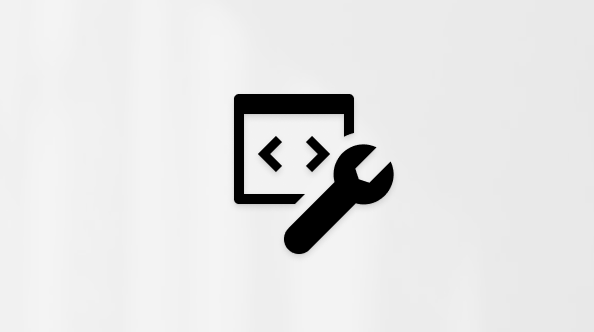July 8, 2025—KB5062557 (OS Build 17763.7558)
Applies To
Release Date:
7/8/2025
Version:
OS Build 17763.7558
Windows Secure Boot certificate expiration
Important: Secure Boot certificates used by most Windows devices are set to expire starting in June 2026. This might affect the ability of certain personal and business devices to boot securely if not updated in time. To avoid disruption, we recommend reviewing the guidance and taking action to update certificates in advance. For details and preparation steps, see Windows Secure Boot certificate expiration and CA updates.
Windows updates do not install Microsoft Store application updates. If you are an enterprise user, see Microsoft Store apps - Configuration Manager. If you are a consumer user, see Get updates for apps and games in Microsoft Store.
Support for Windows 10 has ended on October 14, 2025
After October 14, 2025, Microsoft will no longer provide free software updates from Windows Update, technical assistance, or security fixes for Windows 10. Your PC will still work, but we recommend moving to Windows 11.
Support for Windows Server 2019 will end in January 2029
After January 9, 2029, Microsoft will no longer provide free software updates from Windows Update, technical assistance, or security fixes for Windows Server 2019. We recommend that you upgrade to a later version of Windows Server.
|
Change date |
Change description |
|
August 12, 2025 |
|
|
July 23, 2025 |
|
Summary
This security update includes fixes and quality improvements that were a part of the following update:
The following is a summary of the issues that this update addresses when you install this update. The bold text within the brackets indicates the item or area of the change we are documenting.
-
[Input and Composition] Fixed: An issue affecting the complete removal of unused language packs and Feature on Demand (FOD) packages. This issue led to unnecessary storage use and increased Windows update installation time.
-
[Network Security and Containers] Fixed: An issue in the CharNextW function which caused incorrect character rendering for GB18030-2022 compliance. The function has been deprecated and replaced with a modern ICU-based solution to ensure proper handling of GB18030-2022 requirements.
-
[DHCP Server (known issue] Fixed: An issue in which the DHCP Server service might intermittently stop responding and affects IP renewal for clients.
-
[Microsoft RPC Netlogon protocol] This update includes a security hardening change to the Microsoft RPC Netlogon protocol. This change improves security by tightening access checks for a set of remote procedure call (RPC) requests. After this update is installed, Active Directory domain controllers will no longer allow anonymous clients to invoke some RPC requests through the Netlogon RPC server. These requests are typically related to domain controller location. Certain file and print service software can be affected, including Samba. If your organization uses Samba, please refer to the Samba release notes.
If you installed earlier updates, only the new updates contained in this package will be downloaded and installed on your device.
For more information about security vulnerabilities, please refer to the new Security Update Guide website and the July 2025 Security Updates.
For more information about Windows 10, version 1809, see its update history page.
For information about Windows update terminology, see the article about the types of Windows updates and the monthly quality update types.
Windows 10 servicing stack update (KB5062800) - 17763.7557
Microsoft now combines the latest servicing stack update (SSU) for your operating system with the latest cumulative update (LCU). SSUs improve the reliability of the update process to mitigate potential issues while installing updates.
This update makes quality improvements to the servicing stack, which is the component that installs Windows updates. To learn more about SSUs, see Servicing stack updates and Servicing Stack Updates (SSU): Frequently Asked Questions.
Known issues in this update
Symptoms
Following installation of this update, there might be issues when using the Microsoft Changjie IME (input method editor) for Traditional Chinese. Reported symptoms include:
-
Inability to form or select words after typing the full composition (associate phrase window).
-
Spacebar or blank key not responding.
-
Incorrect or distorted word outputs.
-
The conversion candidate window fails to display properly.
Resolution
This issue is resolved by Windows updates released on and after August 12, 2025 (KB5063877). We recommend you install the latest update for your device as it contains important improvements and issue resolutions, including this one.
Symptoms
After installing this update, the Cluster Service on Windows Server 2019 might repeatedly stop and restart, causing nodes to fail to rejoin the cluster or enter quarantine states, virtual machines to experience multiple restarts, and frequent Event ID 7031 errors within event logs. This issue only occurs in configurations using BitLocker with Cluster Shared Volumes (CSV).
Resolution
This issue is resolved by Windows Server 2019 updates released on and after August 12, 2025 (KB5063877). We recommend you install the latest update for your device as it contains important improvements and issue resolutions, including this one.
How to get this update
Before you install this update
You must install the August 10, 2021 SSU (KB5005112) before installing this cumulative update.
Install this update
To install this update, use one of the following Windows and Microsoft release channels.
|
Available |
Next Step |
|
|
None. This update will be downloaded and installed automatically from Windows Update and Microsoft Update. |
|
Available |
Next Step |
|
|
None. This update will be downloaded and installed automatically from Windows Update for Business in accordance with configured policies. |
|
Available |
Next Step |
|
|
To get the standalone package for this update, go to the Microsoft Update Catalog website. For information about how to download and install updates from the Update Catalog, see How to download updates that include drivers and hotfixes from the Windows Update Catalog. |
|
Available |
Next Step |
|
|
This update will automatically sync with Windows Server Update Services (WSUS) if you configure Products and Classifications as follows: Product: Windows 10 Classification: Security Updates |
If you want to remove the LCU
To remove the LCU after installing the combined SSU and LCU package, use the DISM/Remove-Package command line option with the LCU package name as the argument. You can find the package name by using this command: DISM /online /get-packages.
Running Windows Update Standalone Installer (wusa.exe) with the /uninstall switch on the combined package will not work because the combined package contains the SSU. You cannot remove the SSU from the system after installation.
File information
A list of the files that are included in this update are provided in a CSV (Comma delimited) (*.csv) file. The file can be opened in a text editor such as Notepad or in Microsoft Excel.












